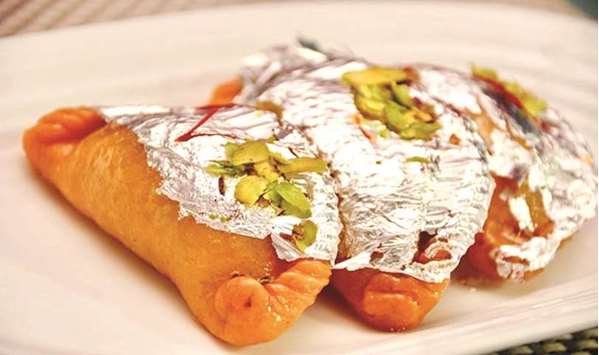The diversity of people living in Middle East always inspires me to learn and write more about the varied cuisine around. Today, I will share my knowledge about figs, a delicate fruit and one of my favourites. They grow on ficus tree which is a member of the mulberry family. They are unique in that they have an opening called ostiole or “eye” which is not connected to the tree but helps in the development of the fruit.
Figs range dramatically in colour and subtly in texture depending upon the variety, there are almost hundred different varieties of figs. Some of the most popular ones are; black mission, blackish purple skin and pink coloured flesh. The most common one are; kadota, green skin and purplish flesh, calimyrna, greenish yellow skin and amber flesh, brown turkey- purple skin and red flesh and Adriatic. This variety is most commonly used to make fig bars, which has a light green skin and pink tan flesh.
Figs are not suitable to make energy fig bars but are a culinary delicacy par excellence. Part of the wonder of the fig comes from its unique taste and texture. Figs are lusciously sweet and feature a complex texture that combines well with the chewiness of their flesh, the smoothness of their skin and the crunchiness of their seeds. In addition, since figs are delicate and perishable, some of their mystique comes from their relative rarity. Because of this the majority of dates are either sun dried or artificial dried creating a sweet and nutritious dried fruit that can be enjoyed throughout the year. As a kid, my mother used to give me a fig with warm milk in winters to keep me healthy and nourished.
Since fresh figs are perishable fruits, they should be purchased only a day or two in advance of when you are planning to eat them. Look for figs that have a rich, deep colour and are plump and tender and not mushy. The stems should be firm and should be free of bruises. Smelling a fig can also give you clues into its freshness and should not smell sour, which indicates that it might be spoiled.
One very interesting fact about figs is that they are not technically a fruit but an inverted flower. Fig trees don’t flower like apples and other common fruits. Their flowers bloom inside the pear shaped pod, which later matures into the fruit we eat. Each flower the produces a single , one seeded hard shelled fruit called achene, that is what gives the fig the crunch we all know and admire. So when you eat a fig you are consuming multiple fruits.
Figs are now a days available all the year round but there is nothing like the unique taste and texture of fresh figs. They are uniquely sweet with a hint of tartness. This tastes best combined with the crunchy texture of their seeds. California figs are available from June through September and some European varieties are available in autumn too. Figs not only taste good but are a rich source of potassium, a mineral that helps control blood pressure. They are also found beneficial to fight against breast cancer, avoid cardiovascular disease and is helpful for overall well-being.
Figs and Coconut Gujia
Ingredients
For the crust
All purposed flour 4 cups
Clarified butter 8 tbsp
Salt 1 tsp
Baking soda 1/2 tsp
For Filling
Coconut grated 500 gm
Figs, chopped 200 gm
Pistachio, chopped 2 tbsp
Cashew nuts, chopped 2 tbsp
Almonds, chopped 2 tbsp
Raisins, chopped 4 tbsp
Green cardamom powder 1/2 tsp
Castor sugar 250 gm
Condensed milk 100 ml
Method
To prepare the crush, sieve the refined flour and run in the ghee and salt
Add cold water and knead into a stiff dough, cover with damp cloth and set aside
In a heavy bottom pan add grated coconut and sauce over slow flame to remove the raw smell and lightly brown it
Remove from flame and keep aside in a bowl
Combine chopped figs, pistachio, cashew-nuts, raisins, almonds, green cardamom powder and condensed milk and sugar
Combine well with coconut to make a crumbly texture filling, keep aside
With oiled hands divide the dough not small balls
Roll the dough balls flat using a rolling pin into a 4 inch dia circular disk
Place 2 tbsp of prepared filling in it and fold into half and fold in the ends to secure the filling
You can also use a gujia mold to shape them or use a fork to seal the ends of the gujia
Keep them covered with damp cloth to avoid them drying
Place the gujia in a baking tray and bake in a preheated oven at 180 degrees Celsius / 350 degrees Fahrenheit for 20-22 minutes
You can also fry these gujia and dip them in sugar syrup and keep aside, serve cold garnished with some chopped pistachio
* Chef Tarun Kapoor, Culinary Mastermind, USA. He may be contacted at [email protected]

SWEET: Figs and Coconut Gujia is sweet dumpling filled with dry fruits. Photo by the author


